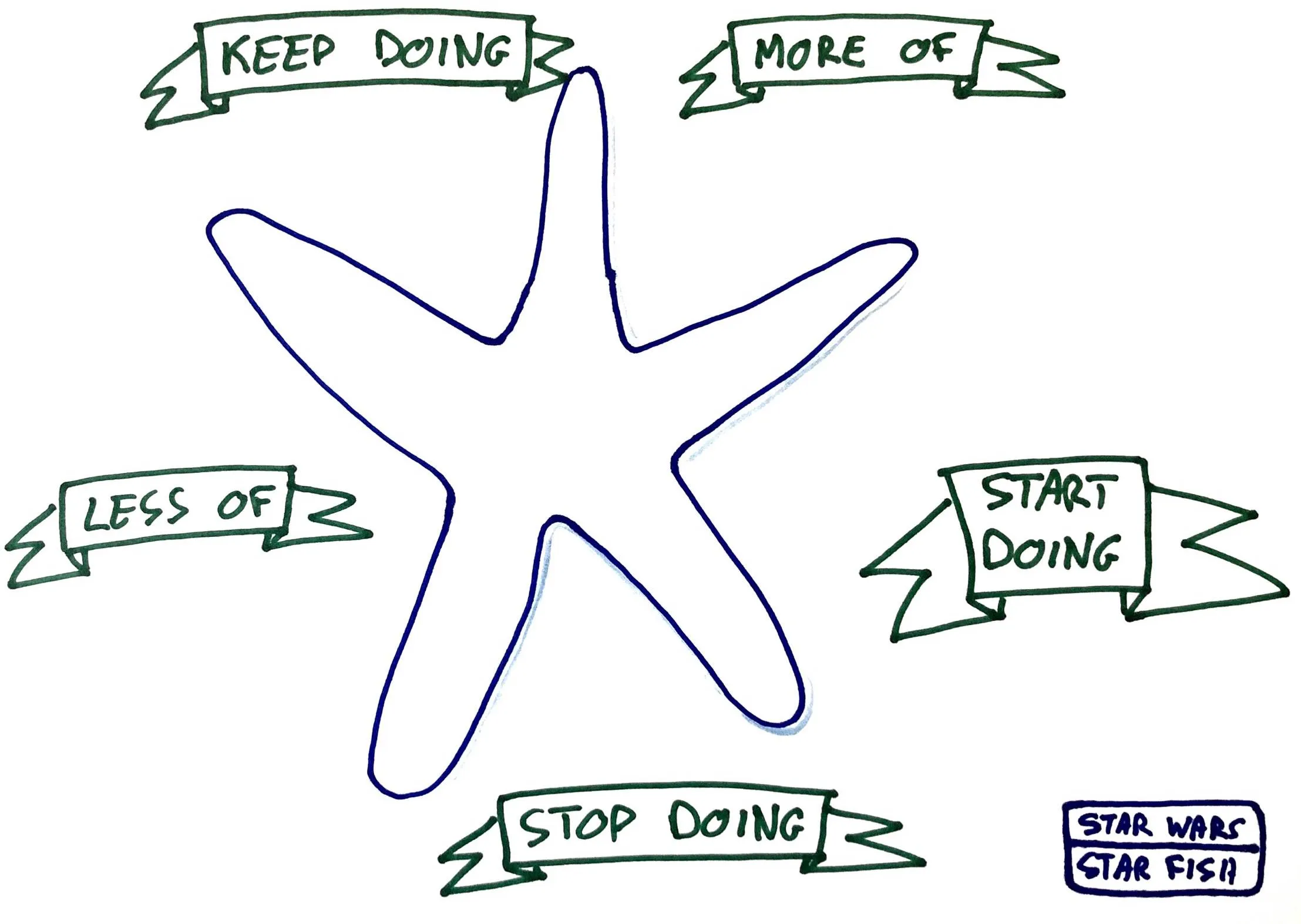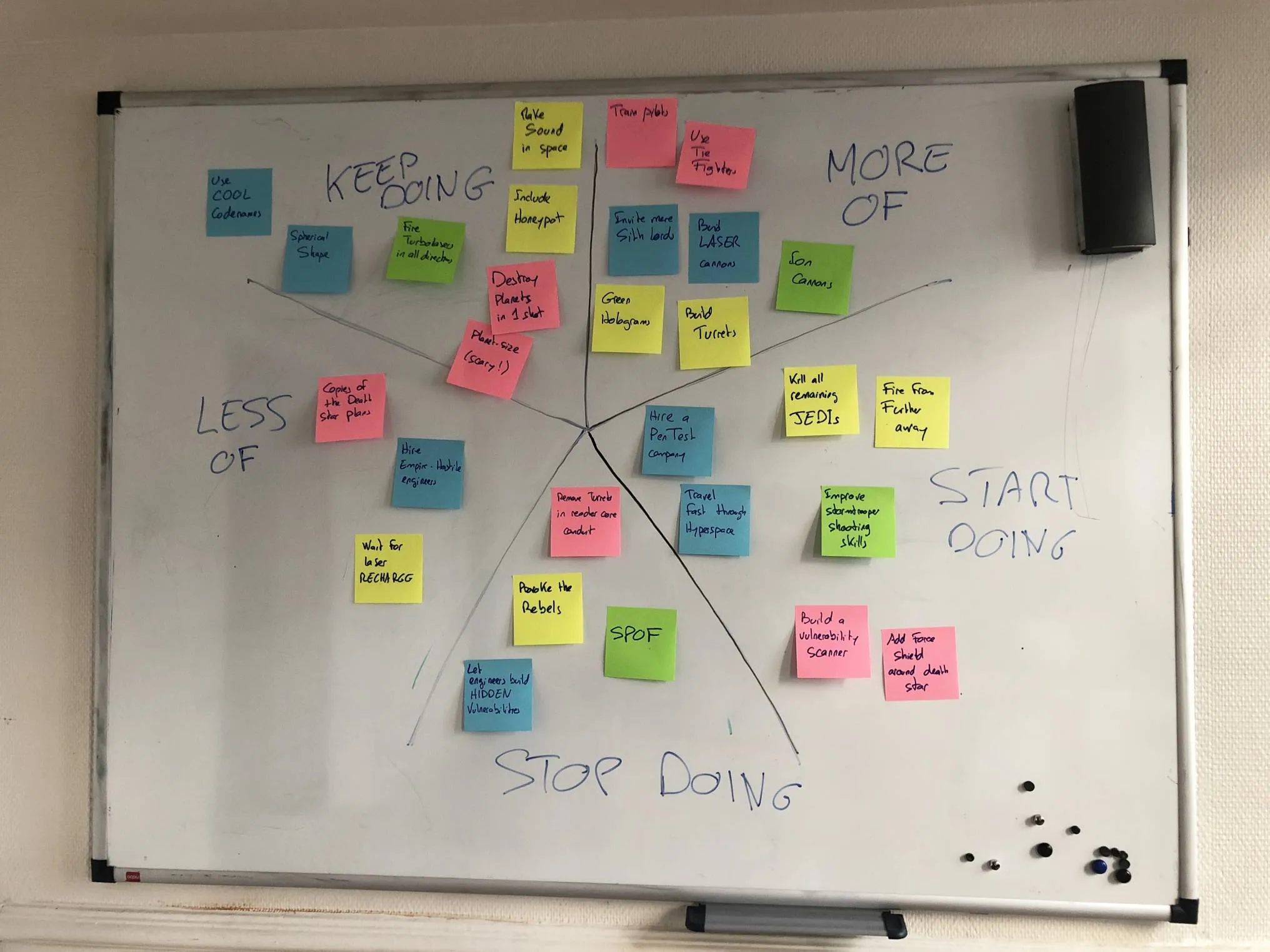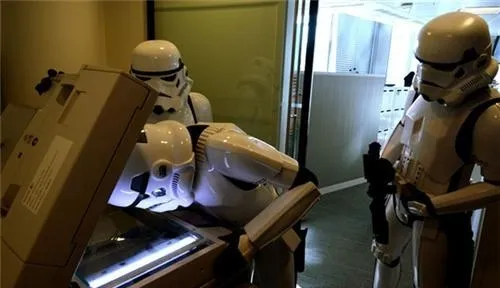
Star Wars Agile Retrospectives: The Starfish and the Death Star

Let’s face it: the Death Star was a fiasco. The rebellion broke it even before it could fire its second blast. But the Empire is willing to learn from its mistakes. Following the advice of our Agile coach, I’ve gathered a few StormTroopers for a little get-together, during which we’ve used the Starfish Retrospective technique. Here is my feedback about the process, and the outcome.
Tip: If you’re Disney, and you think we infringed your copyright big time, please don’t unleash your horde of attorneys on us. Just send a Cease and Desist letter to contact@marmelab.com. We’ll remove this post immediately. We just did it for a Good Cause™.
The Starfish Retrospective, in Theory
Our agile coach once said:
Agile Retrospectives are one of the fundamental tools of continuous improvement
After the Death Star fiasco, I asked him to animate a post-mortem. He proposed a workshop called “Starfish Retrospective”. The principle is simple.
First, each participant spends five minutes to think about the last episode, and write down their thoughts about the team, the process, and the tools, on Laser Post-It notes.
After this “brainstorming” phase, each participant goes to the whiteboard and puts their sticky notes in one of the 5 sectors of the following chart:

The board should be filled sector by sector, i.e. all the participants first read their “Stop” notes, then all the participants read their “Less” notes, etc.
As the results look like a starfish, this workshop is called “The Starfish Retrospective”. I had trouble explaining to my fellow StormTroopers what Starfishes are since they’ve never seen a fish before. But we’ve all accepted the term as Yet Another Agile BuzzWord™.
Finally, the team uses common prioritization techniques to select a few items to be addressed, and agree on concrete actions to take during the next iteration.
The Starfish Retrospective, in Practice
The coach insisted on having a blame-free session - even though Management is primarily looking for heads to cut.
The results of this workshop were astounding: we discovered many ways to improve the action of the Empire, in less than an hour. Here is the gist of what we’ve learned:

- Stop doing
- Let engineers build hidden vulnerabilities
- Remove turrets in the path to the reactor core; whose idea was it?
- Provoke the rebellion by blasting their mother planet
- Leave a Single Point of Failure in a 120 kilometers in diameter fortress
- Less of
- Hire Empire-hostile engineers
- Make copies of the Death Star plans
- Wait for laser recharge
- Keep doing
- Use spherical shape - avoids accidental auto-hit by a laser blast
- Build planet-size starship; although it’s super expensive to move, it’s also super scary for rebels
- Include honeypot in the design (like the corridor surrounded by ion cannons)
- Fire Turbolasers in all directions
- Use cool codenames (“Project Stardust” is killing it)
- Destroy planets with a single-shot
- Make sound in space
- More of
- Train pilots
- Build Turrets
- Build ion cannons
- Build laser cannons
- Invite Sith Lords aboard
- Use Tie fighters
- Green holograms
- Start doing
- Hire a penetration testing company
- Buy a vulnerability scanner
- Kill all remaining Jedis
- Train StormTroopers so that they become better at shooting X-Wings
- Use hyperspace to travel to target instead of waiting in orbit
- Add a force shield around the planet
- Fire from farther away; as space is mostly empty, we could destroy a planet from the other side of the galaxy for better security
Filling the chart sector by sector made this meeting more a discussion than a presentation, and it really felt like a collaborative work - unlike other retrospectives, where one person speaks for 10 minutes and the others look at their TurboGameboy.
Starting with the negative topics, then progressing towards the positive topics really helped us end the retrospective in a positive feeling.
Based on the board, we’ve used dot voting with lasers to prioritize 3 actions for the next sprint:
- Build a bigger Death star
- Protect it with a planetary shield projector
- Decrease laser recharge duration from 24 hours to a few minutes
We’re confident that the new iteration will allow us to improve the team and individual performance, and to get closer to the Empire vision. The team is already hard at work!

Conclusion
I definitely recommend hiring an agile coach for post mortems. Maybe we should hire one during the design and construction phases, too.
The friendly atmosphere of the workshop really encouraged great contributions (as opposed to the usual terror). Even though many of the suggestions weren’t selected by the dot voting exercise, sharing them resulted in a huge motivation boost. We felt more aligned, more hand in hand. As a downside, the team regretted that all the people who contributed to the first Death Star weren’t present during the retrospective. They would have given great insight, but unfortunately, they’re all dead.
Management was very happy with the improvements suggestions, which were different from what they thought they should do (kill us all and replace us by robots). They’re now considering that feedback from the base should be collected more frequently.
We’ve repeated the exercise several times, always with great outcomes. In particular, we’ve identified a vulnerability in our Star Destroyers when a nearby vessel enters light speed. I’ve filed an issue in our XHub repository about that. Hopefully, our software engineers will fix that.
Finally, we loved the StarFish format. It really unlocks great ideas and fits our mindset. We’ll continue using this format in the near future.
Authors

Marmelab founder and CEO, passionate about web technologies, agile, sustainability, leadership, and open-source. Lead developer of react-admin, founder of GreenFrame.io, and regular speaker at tech conferences.